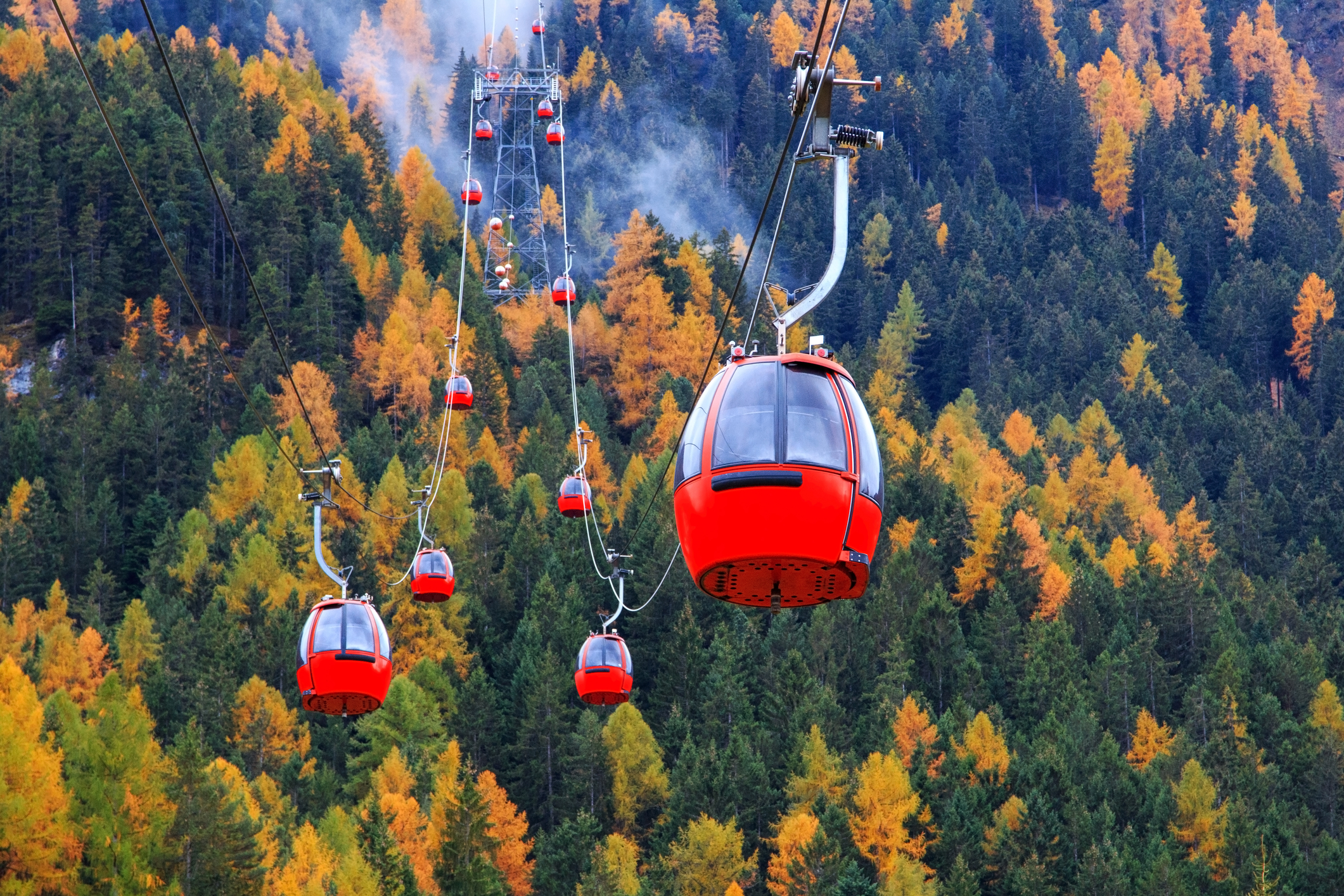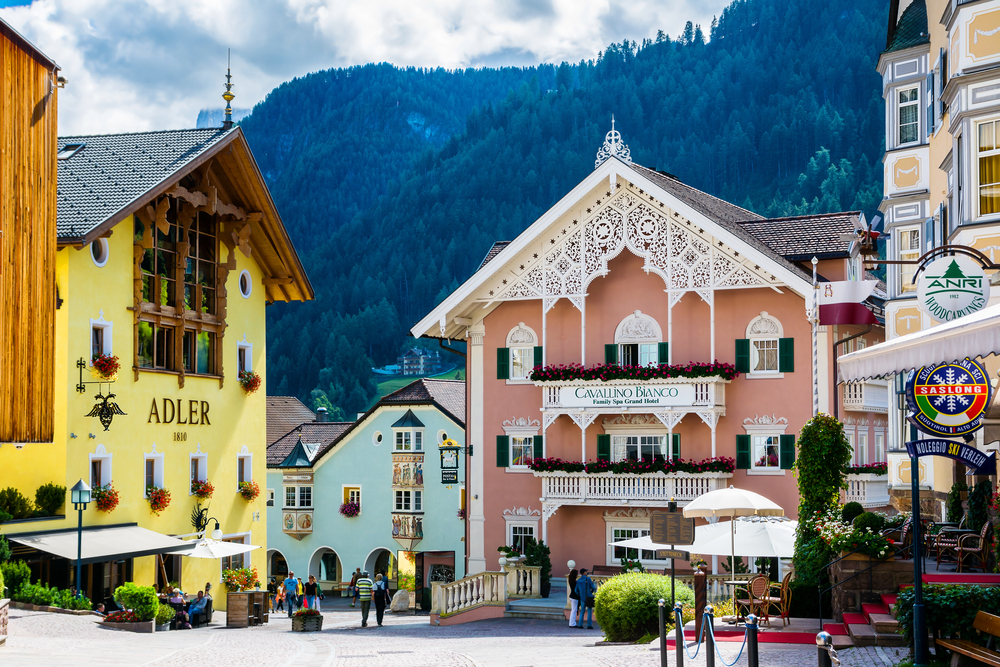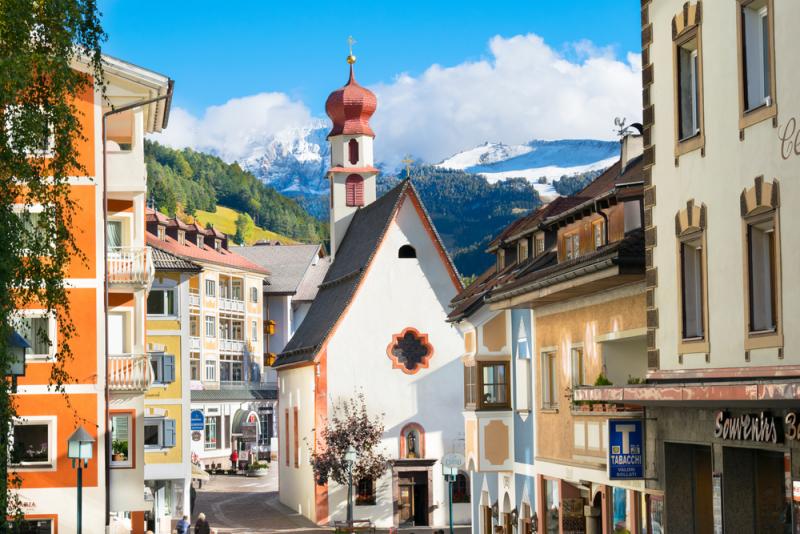When you first arrive in magical Ortisei, you might feel like you’re in the Bavarian Alps or castle-strewn Austria. But despite its distinct alpine vibe and soundtrack of clanging cowbells, tiny Ortisei is actually part of Italy, located in the heart of the snaggle-toothed Dolomites. The largest of the towns that make up the Val Gardena — a string of valleys in the autonomous province of South Tyrol-Bolzano — Ortisei is also known as Saint Urlich (in German) and Urtijëi (in Ladin, an indigenous Romance language).
With a local identity that meshes the Italian art of living with Germanic efficiency and Ladin warmth, Ortisei is so pristine that you would be hard-pressed to find so much as a cigarette butt on the ground. The people are welcoming, the food is robust and comforting, and the natural beauty is nothing short of breathtaking.
From mountain peaks to charming woodcarving workshops to pretty timber chalets, here’s what to check out in this high-elevation town.
Exploring and adventuring

Given Ortisei’s trilingual population (in Italian, German and Ladin), you’ll be warmly welcomed by the shopkeepers and cafe owners of the main pedestrian-only zone with anything from a Buongiorno to a Bun dé or bëgnodüs. Get your bearings by strolling around the central Piazza San Antonio area, anchored by a charming, ridge-turreted church dedicated to the patron saint of Padua. Stop in at one of the chic hotels or cozy cafes for a coffee or a hot seasonal drink.
Though the village center is closed to traffic, there are no restrictions on two-wheel transport. Mountain and e-bicycle hire shops are peppered all over town, reflective of the healthy and active local lifestyle.
Ski season in Ortisei usually continues through April. There are direct lift connections to the ski and hiking areas of Rasciesa, Seceda, and Alpe di Siusi, as well as to Sellaronda, home to what’s said to be the world’s largest ski carousel. Hit the downhill slopes, strap on snowshoes, and go on an off-piste adventure. There are six toboggan runs and during lune piene (full moons), trails and the cross-country ski rental center on Monte Pana stay open.
During the warmer months, once the ski slopes shutter and the mountainous terrain turns green, families and outdoorsy types head to Ortisei to escape the city grind (and, of course, the heat). Paragliding and mountain biking are two of the main local activities. Mountaineers can hire experienced mountain guides at the Caters Alpine School offering a range of itineraries at all levels of difficulty.
Funicular cable cars on either side of town operate year-round to whisk thrill-seekers to the ski, hiking and cycling areas.
Culture and crafts

At the top of Strada Rezia, near where it crosses over the river, is Exhibition ART52, a gallery highlighting local craftsmanship through an impressive collection of hand-carved wooden statues and paintings typical of the Val Gardena. It’s a good orientation on Ortisei’s folk art heritage ahead of any visits you make to workshops and studios around town.
The Museum Val Gardena/Museum de Gherdëina offers the next level in local culture, with its focus on Gröden wood carvings and paintings from the 17th to the 20th century, old Gröden wooden toys, fossils and minerals from the Dolomites, and esoteric finds like a 17th-century fasting cloth from the local Chiesa di San Giacomo, which the museum claims is the only intact piece of its kind in South Tyrol. There’s also a section dedicated to the memory of local celebrity Luis Trenker, a film producer, mountaineer and architect who was born in Ortisei in 1892.
Most notably for language lovers, the same building that hosts the museum is the seat of the Union of Ladins de Gherdëina, a nonprofit Val Gardena organization dedicated to maintaining the area’s unique Ladin language and culture (which existed for centuries prior to modern Italian).
Don’t skip the Chiesa di San Giacomo, dedicated to the patron saint of pilgrims and hikers — and, aptly, only reachable by foot. The late-Gothic structure is the oldest and highest house of worship in the valley, sitting at an elevation of more than 5,000 feet, and has a white-stone bell tower with awe-inspiring views of the jagged peaks of the Seceda, Pitschberg and Resciesa mountains.
Dining and drinks
Wake up with a frothy cappuccino at Café SoViSo, a lovely bar just off the high street on Rezia Platz (Piazza Rezia) that’s a favorite among the local crowd; get there early to snag a table. Some evenings SoViSo hosts live music — perfect for enjoying with an après-ski cocktail.
Dumplings or goulash at lunch or dinner are a must. I loved Traube-Janesc for its stube-style ambiance and pavement-side seating. It serves a hearty, seasonally rotating menu of typical Tyrolean fare that you can chase with their homemade strudel. Traube is located kitty-corner from the church of San Antonio at Strada Rezia 51.
For something glitzier and more romantic, try one Michelin star spot Anna Stuben, helmed by acclaimed chef Reimnund Brunner and located inside the Gardenia Hotel.
Where to stay in Ortisei

From the outside of five-star Adler Spa Resort Dolomiti, there’s little indication of the vast and luxurious property that lies within. Built around a former Tyrolean guesthouse, the expansive grounds have facilities offering everything from mud baths to cryotherapy to soul-soothing saunas and massage therapies. Take a dip in the indoor-outdoor pool any time of year. Included with room booking fees are meals served in one of several hotel dining rooms. If you can’t swing staying overnight, the cozy lobby bar, with a patio that overlooks Ortisei, is perfect for an aperitif or after-dinner drink.
Across the road from Adler Dolomiti is the Cavallino Bianco. Frequently billed as one of the world’s most kid-friendly hotels, it caters to families with children of all ages. Plenty of hotels pay lip service to parents, but Cavallino Bianco builds its whole philosophy and structure around them (no child is excluded from adult areas; the piano bar has a play corner and the spa, a dedicated kids’ section). Kids have 1,000 square meters of grounds for burning off energy and family rooms sleep up to eight. During ski season, a bridge connects the hotel directly with the lift to Alpe di Suisi, where there’s a ski and cycling school for children (in each sport’s respective seasons).
Though these two options are best for a bit of late-winter luxury, Ortisei isn’t Cortina, meaning you’ll also find plenty of budget and mid-tier options, particularly if you focus on looking for guesthouses, bed and breakfasts, chalets, and holiday apartments.
If you go
Ortisei is easiest to reach by car, either by driving the Brenner Motorway (A22) or via the SS12 along the Innsbruck-Brennero-Chiusa route. From Bolzano, the 50-minute drive snakes upward with stunning views all along the way. Carry snow chains even if traveling in spring or fall, as the weather can change on a dime.
Train travelers can connect to Bolzano/Bozen from much of Italy and even Europe. Exit the Bolzano station and walk five minutes to the Busbahnof/Autostazione (bus pads) where you can catch the 350 ‘Val Gardena’ bus to Ortisei; the ride takes about an hour.
